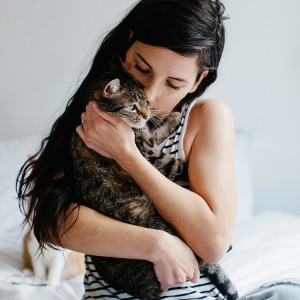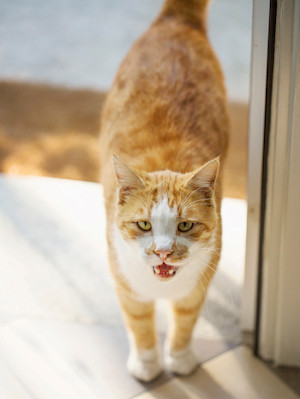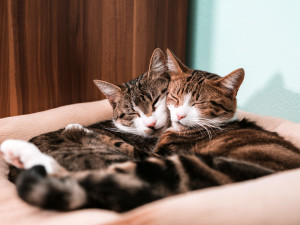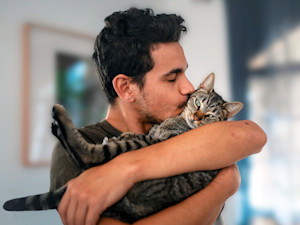8 Reasons Why Your Cat Doesn’t Like Being Held—and What to Do About It
Don’t despair—it isn’t you.
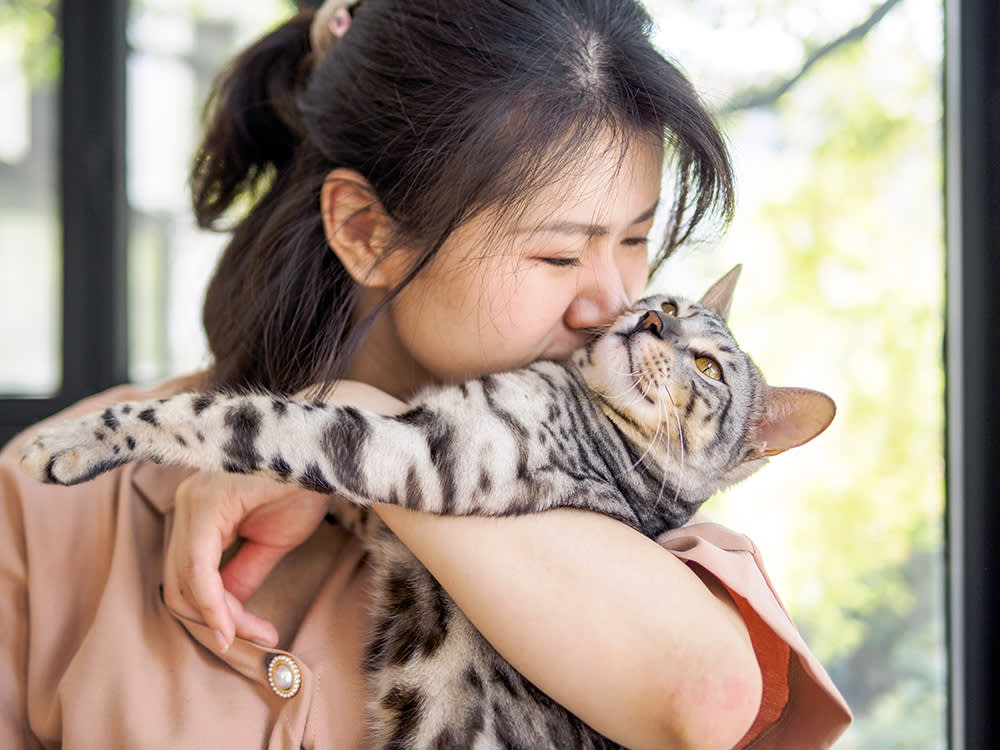
Share Article
In This Article:
Reasons Cats Don’t Like Being Heldopens in a new tab How to Get Your Cat Used to Being Picked Upopens in a new tab How to Hold a Cat Who Hates Being Held?opens in a new tab
As a kid, maybe you had a cat who loved to be held and carried around. Now, as an adult, you’ve adopted a cat and are hoping for that same experience of your cat jumping into your arms for a snuggle. But it might not unfold that way. And that’s OK.
I hear from a lot of clients who hoped for a specific “kind” of cat (cuddly, playful, etc.) and were disappointed when they realized their cat was different. The truth is that every cat is an individual. It’s important to love and respect them for who they are.

littleKin™ is Kinship’s home just for puppy and kitten parents. Bop over to check out expert advice, new pet tools, and special deals—all curated for your newest family member.
opens in a new tabOr maybe you’re just concerned you won’t be able to hold your cat when you need to, like in an emergency. In either case, there are simple steps you can take to help your cat feel more comfortable being held.
Main takeaways
There are many legitimate reasons your cat may not like being held.
Sometimes it’s a preference. But it can be more serious, based on fear and feeling unsafe.
You can help your cat get comfortable with being held, using a slow and positive approach.
It’s still important to respect your cat’s preferences and boundaries.
In an emergency, a towel wrap can help you more safely hold a fearful cat.
Main reasons why your cat doesn’t like being held
If your cat doesn’t like being held, there’s a reason behind it. Let’s look at some of the things that trigger a cat’s fear or discomfort with holding. Then we’ll talk about what you can do to work on it.
1. It isn’t natural for them.
We haven’t done much selective breeding with cats. This means today’s housecats aren’t all that different from their wild ancestors. And what would “hold” a cat in the wild? A predator.
Of course, you’re not a predator. But cats still have the instinctual need to control their situation — especially their bodies — to stay safe. For some cats, being held takes away their control and that sense of safety.
2. Some cats like to climb by themselves.
It’s that control thing again. Some cats prefer to get where they want to go all by themselves. If you pick them up to put them somewhere, even if it’s just to hold them for a snuggle, they get nervous because they’ve lost that control. They may prefer that you sit and let them climb onto your lap or shoulder on their own.
3. Some cats get scared or anxious.
You guessed it. Control plays a role here too. Some cats are naturally more anxious than others. It could be genetic, due to their history, or a number of other reasons. A scared cat wants as much control as possible because control equals safety. Helping them feel more confident can make them more comfortable being held.
4. Previous negative experiences.
Cats are quick to learn lessonsopens in a new tab. If your cat has a negative experience being held — like being dropped and injured as a kitten, being forcefully held during a painful medical procedure, or just being held against their will — they learn that being held means bad things happen. They’re not going to put themselves in that position. You’ll want to work on changing those negative associations to positive ones.
5. They don’t like to be restrained.
At this point, we may sound like a broken record: control, control, control. But that just shows you how important this one simple concept is to helping a cat feel safe and secure. Restraining means no control. That cat can’t easily leave if they feel unsafe. They’ve learned that their boundaries are not respected, and they often have to get defensive to gain back that control. So, they avoid the situation (or, being held).
6. They may be in pain.
Cats are great at hiding pain. You may have no idea your cat has broken a bone or pulled a muscle, for example, until they suddenly react differently to being held. They could be feeling pain, especially if they get aggressive. Time for a vet visit.
Any kind of discomfort can lead to nervousness around being held — whether the holding is increasing the pain or they’re just afraid it might. Even an experience where they felt pain when being held could make them afraid of it now.
7. They’ve had a lack of socialization.
Cats who haven’t been positively shown that being held is a safe, pleasant experience will naturally want to avoid it. That’s why it’s so important to handle kittens at a young age and in the right way.
There’s still hope for older cats who weren’t socialized at a young age. It just takes more time and patience. But it’s worth it.
8. They are living with a medical condition.
As mentioned, any pain or discomfort can make a cat uncomfortable being held. Also, just the stress of a medical condition, or the type and amount of unpleasant handling they’ve had to deal with during treatment, can turn them off the idea.
How to get your cat more used to being picked up
You need to show your cat two key things to change their reaction to being held.
They must feel as if they always have choice and control. Respect their boundaries, and don’t push past their comfort zone. When they want down, they can get down.
Being held means good things happen for them. Treats, petting, verbal praise, catnip, play, or anything else they love should get paired with being held — so you can reverse their negative feeling about it.
Do this in baby steps, using short sessions to work on a few steps at a time. The size and intensity of this training will depend on how nervous your cat is while being held.
If they let you do it, but just don’t love it, you can move more quickly. If they’re stressed and trying to get away immediately, you should move much more slowly and start at a lower intensity (a simpler, smaller baby step). If you can’t interact with them at all, start with something less intense altogether, like being in the room with them or a few gentle pets. They’re not ready for holding yet.
Start at the lowest intensity your cat needs to feel comfortable. That may involve holding them for a few seconds or not even lifting them up, but just inviting them onto your lap.
From there, take small steps that gradually get you closer to fully holding your cat.
Then increase the amount of time you hold them.
For example, you may go from your cat sitting on your lap to placing your hands on them. Then do a gentle lift of an inch or two, close to your body, for just a second. Then the same small lift for a few seconds. Then lifting a tiny bit higher for a tiny bit longer, and so on. For each step in the right direction, make something positive happen. Give a treat, lots of verbal praise, a scratch on their favorite spot, etc. If they show even small signs of nervousness, slow down. You never want to push past their comfort zone.
As you’re able to hold your cat for longer periods, give those treats and other good things throughout the holding session. It can take some time, doing sessions of just a few minutes a day for a couple of weeks or more. Remember, they have a reason for their fear of being held. You’re trying to show them it’s not necessary, and in fact, it’s really good for them to be held. That takes time. Be patient.
How do you hold a cat who hates being held?
Any living creature has the right to be handled in a way they enjoy and that feels safe. If it’s just not your cat’s thing, that’s fine. There are plenty of other ways you can love on them.
However, it’s still important that you’re able to hold your cat without traumatizing them. There could be an emergency, or you may need to urgently secure them. It’s important to work on the steps above to show them being held isn’t something to fear. And you’ll respect that they don’t love it by only holding them when you have to and by making it as low-stress as possible.
If your cat won’t allow you to hold them in an emergency, or you haven’t worked on the training yet, one of the safest options is to towel-wrap themopens in a new tab. The towel wrap will help your cat feel a bit more secure. It also protects you from defensive or fearful aggression because their paws are secure within the towel.

LeeAnna Buis, CFTBS, FFCP
LeeAnna Buis has adored cats her entire life and thought she knew them inside-out and sideways. But it wasn’t until she worked with a feline behavior consultant that she fully understood how incredible, complicated, and inspiring cats really are.
LeeAnna earned her certification through Animal Behavior Institute, earning the CFTBS designation. She is a certified Fear Free trainer, a training professional member of the Pet Professional Guild (PPG), and a member of both the International Association of Animal Behavior Consultants (IAABC) and Cat Writer’s Association (CWA).
Related articles
- opens in a new tab
Why Does Your Cat Run Away From You?
Cats may be curious creatures—but we have some answers.
![Red Cat On Threshold Looks At The Camera And Meows.]() opens in a new tab
opens in a new tabWhy Is My Cat Breathing Heavy?
This can happen over time or very suddenly. Either way, it’s important to learn more about this symptom.
![Two tabby cats in embrace lying in cushion.]() opens in a new tab
opens in a new tabWhat Are Cat Pheromones and How Do They Work?
Communication is key, and pheromones are your cat’s version of DMs.
![Tattooed and pierced woman wearing a black and white striped shirt and holding an upset looking cat]() opens in a new tab
opens in a new tabIs My Cat Angry at Me? How to Tell if Your Cat is Upset
Cat behaviorist Kristiina Wilson on how to tell if your cat is grumpy—or just kind of like that.
![Man holding his cat.]() opens in a new tab
opens in a new tabYour Cat’s Anxiety—Explained
Because they’re probably not going to tell you why they just scratched the heck out of the couch.

